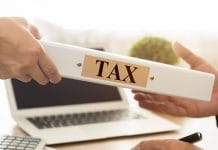Bad credit doesn’t have to mean financial dead ends. If you’re struggling to access traditional credit options, an unsecured line of credit for bad credit might be the flexible solution you’ve been searching for.
Unlike secured loans that require collateral, these credit lines offer breathing room without putting your assets at risk. Whether you’re dealing with unexpected medical bills, car repairs, or simply need a financial safety net, understanding your options can transform your financial outlook.
What Is an Unsecured Line of Credit?
An unsecured line of credit functions like a credit card without the plastic. It’s a revolving credit account that lets you borrow money up to a predetermined limit, repay it, and borrow again as needed. The “unsecured” part means you don’t need to pledge collateral like your home or car.
Here’s how it works:
- Draw funds when you need them
- Pay interest only on what you use
- Repay at your own pace (within terms)
- Reuse the available credit as you pay down the balance
This flexibility makes it particularly attractive for people with fluctuating income or irregular expenses.
Can You Really Qualify with Bad Credit?
Yes, you can qualify for an unsecured line of credit even with poor credit. Many lenders specifically target borrowers with credit scores below 640, using alternative underwriting methods that look beyond traditional credit scores.
What Lenders Actually Look For:
| Factor | Weight | What It Means |
| Income Stability | High | Consistent monthly income matters more than credit history |
| Banking History | Medium | No recent overdrafts or account closures |
| Debt-to-Income Ratio | High | Your monthly debt payments vs. income |
| Alternative Data | Medium | Utility payments, rent history, cell phone bills |
Modern lenders increasingly use alternative data to assess creditworthiness. This includes your history of paying utilities, rent, and even streaming services—giving you credit for financial responsibility that traditional scoring models miss.
Interest Rates and What to Expect
APRs typically range from 18% to 36% for bad-credit unsecured lines of credit. While these rates are higher than prime borrowers receive, they’re often more reasonable than payday loans or cash advances.
Rate Factors That Matter:
- Credit score range (500-620+ makes a difference)
- Income level and employment stability
- State regulations (some states cap rates)
- Lender type (credit unions vs. online lenders)
- Loan amount requested
The key is shopping around. Even with bad credit, rates can vary significantly between lenders—sometimes by 10 percentage points or more.
How Much Can You Borrow?
Credit limits typically start around $500-$2,500 for first-time borrowers with bad credit. However, some fintech lenders offer limits up to $5,000 or more, depending on your financial profile.
Factors Affecting Your Limit:
- Monthly income (most important factor)
- Existing debt obligations
- Credit history depth
- Lender’s risk tolerance
- State lending regulations
Many lenders start conservative but increase limits over time as you demonstrate responsible usage and repayment behavior.
Common Fees to Watch For
Understanding the fee structure is crucial for making smart borrowing decisions. Here are the most common charges:
Typical Fee Structure:
| Fee Type | Range | When Charged |
| Origination Fee | 1-5% of limit | At account opening |
| Monthly Maintenance | $5-$15 | Every month |
| Late Payment | $25-$40 | When payment is overdue |
| Over-Limit Fee | $25-$35 | If you exceed your limit |
Pro tip: Always compare the Annual Percentage Rate (APR), which includes both interest and fees, to get the true cost of borrowing.
Speed of Approval and Funding
One major advantage of online line of credit options is speed. Many lenders offer:
- Instant pre-approval decisions
- Same-day final approval
- 1-3 business days for funding
This quick turnaround makes unsecured lines of credit ideal for emergency situations where you need access to funds fast.
Will Applying Hurt Your Credit?
Yes, most applications trigger a hard credit inquiry, which can temporarily lower your credit score by 2-5 points. However, this impact is usually short-lived, and responsible usage can quickly improve your credit.
Credit Impact Timeline:
- Initial application: Small temporary dip
- First 3-6 months: Gradual score recovery
- 6+ months: Potential score improvement with good payment history
The long-term credit benefits of responsible usage typically outweigh the short-term inquiry impact.
Smart Alternatives If You Don’t Qualify
If you’re having trouble qualifying for an unsecured personal line of credit, consider these alternatives:
Secured Line of Credit
Requires collateral but offers lower rates and higher approval odds. Your savings account or CD can serve as security.
Credit-Builder Loans
Small loans held in escrow while you make payments. These help establish positive payment history for future credit applications.
Peer-to-Peer Lending
Platforms connecting borrowers with individual investors often use more flexible underwriting criteria than traditional banks.
Credit Union Membership
Many credit unions offer more lenient lending terms and lower fees than commercial banks. Some have specific programs for members rebuilding credit.
Responsible Usage Tips
Getting approved is just the first step. Here’s how to use your line of credit wisely:
Only Borrow What You Need
Treat it like an emergency fund, not free money. The goal is building credit, not accumulating debt.
Keep Utilization Low
Try to use less than 30% of your available credit. Lower utilization ratios boost your credit score faster.
Make Payments on Time
Payment history is the biggest factor in your credit score. Set up automatic payments if possible.
Monitor Your Credit Report
Check for errors and track your progress. Many free services provide monthly credit score updates.
Finding the Right Lender
Not all lenders are created equal. Here’s where to look:
Online Lenders
Often offer the fastest approval and funding. Good for tech-savvy borrowers who prefer digital processes.
Credit Unions
Typically offer lower rates and more personalized service. Membership requirements vary but are often easy to meet.
Community Development Financial Institutions (CDFIs)
Focus on underserved communities and often have more flexible lending criteria.
Traditional Banks
May have stricter requirements but offer relationship benefits if you’re already a customer.
Is Early Payoff Penalized?
Most lines of credit don’t charge prepayment penalties, but always confirm this in your loan agreement. Paying off balances early reduces your total interest costs and can improve your credit utilization ratio.
Making the Most of Your Credit Line
An unsecured line of credit for bad credit can be a powerful tool for financial recovery when used strategically:
- Build payment history with small, regular draws and payments
- Improve credit utilization by keeping balances low
- Establish banking relationships that can lead to better terms later
- Create an emergency fund alternative for unexpected expenses
The key is viewing it as a credit-building tool rather than a long-term borrowing solution.
Final Thoughts
An unsecured line of credit for bad credit isn’t just about accessing money—it’s about rebuilding your financial future. While the rates may be higher than you’d prefer, the flexibility and credit-building potential make it a valuable option for many borrowers.
Remember to shop around, read the fine print, and use the credit responsibly. With time and consistent payments, you’ll likely qualify for better terms and lower rates as your credit improves.
The path to better credit starts with making smart financial choices today. An unsecured line of credit could be the first step toward the financial freedom you deserve.
Ready to explore your options? Start by comparing offers from multiple lenders and choose the one that best fits your needs and budget. Your future self will thank you for taking action today.
For more financial insights and money management tips, visit https://wealthopedia.com/

























